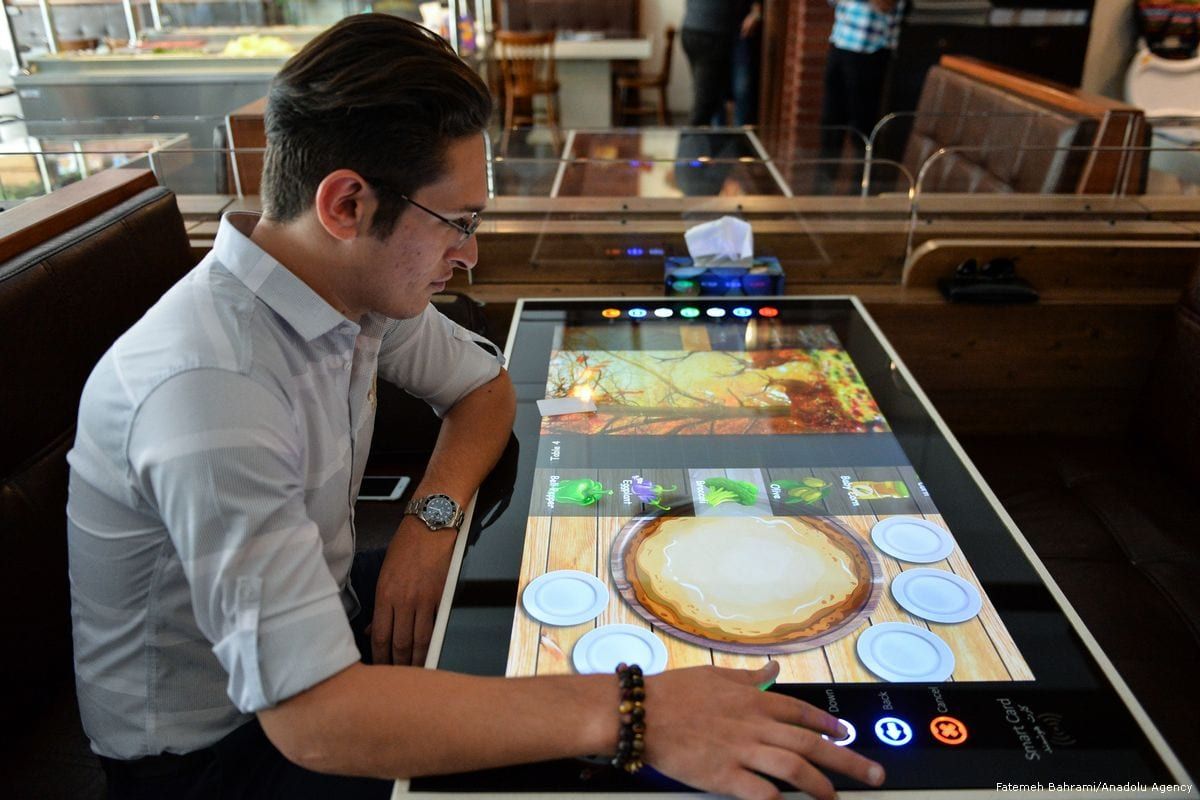The integration of artificial intelligence (AI) into the restaurant industry is transforming the dining experience for customers and streamlining operations for businesses. AI-powered customer support agents are at the forefront of this revolution, offering enhanced interaction, operational efficiency, and strategic advantages that promise to reshape the future of dining out. In this article, we will explore how these technological advancements are revolutionizing the restaurant experience, from personalized recommendations to kitchen optimization, and what this means for the future of the industry.
Key Takeaways
- AI customer support agents are revolutionizing restaurant experiences by managing reservations, optimizing menu navigation, and personalizing order recommendations.
- Voice AI is becoming the preferred method for restaurant ordering, with a significant percentage of Americans favoring voice ordering systems for their convenience and efficiency.
- The quick-serve restaurant sector is undergoing a technological transformation with AI innovations like virtual cashiers and AI-driven drive-thrus enhancing customer service and operational efficiency.
- AI integration offers strategic advantages such as customization, cost-effectiveness, and adaptability to new work conditions, providing a competitive edge for restaurants.
- Restaurants must prepare for the next wave of technological advancements by adopting AI solutions that align with their unique business needs and customer expectations.
Enhancing Customer Interactions with AI

Personalized Menu Navigation and Recommendations
The integration of AI into menu navigation has revolutionized the way customers interact with restaurant offerings. Voice AI technology not only simplifies the process of browsing through various dishes but also tailors recommendations to individual preferences. This personal touch enhances the dining experience, making it more enjoyable and efficient.
By remembering past orders and considering dietary restrictions, AI systems can suggest dishes that align with customers' tastes and health needs, ensuring a satisfying meal every time.
Here are some benefits of AI-powered menu navigation and recommendations:
- Improved customer satisfaction through tailored suggestions
- Increased efficiency in order placement
- Enhanced ability to cater to specific dietary requirements
Restaurants that adopt these AI capabilities are not just keeping up with technological trends; they are setting a new standard for customer service in the dining industry.
Streamlining Reservations and Order Placement
The integration of AI into the reservation and order placement process is a game-changer for the restaurant industry. AI algorithms are designed to relieve staff by taking over routine tasks such as taking orders and managing reservations. This not only reduces the likelihood of errors but also significantly diminishes the chances of losing customers due to long wait times.
The contactless nature of AI-driven systems offers a seamless experience for customers, allowing them to place orders in a conversational manner. This technology is not just about efficiency; it's about enhancing the customer's journey with personalized suggestions based on their preferences, past orders, and dietary restrictions.
By implementing AI voice ordering systems, restaurants can ensure that the following key areas are optimized:
- Order processing stages
- Reservation status
- Menu changes
- Special offers
These improvements lead to a more dynamic and responsive service, where customers can enjoy a streamlined dining experience from the moment they book a table to the moment they place their order.
Improving Communication with Conversational AI
The advent of AI-powered chatbots has revolutionized customer service within the restaurant industry. These digital assistants are capable of handling a multitude of tasks, from answering FAQs to managing bookings, all through natural language processing. This technology not only enhances the customer experience but also alleviates the workload on staff.
Key benefits of conversational AI include:
- Immediate response to customer inquiries
- Consistent communication regardless of peak hours
- Personalized interactions based on customer preferences
By integrating conversational AI, restaurants can ensure that every customer interaction is handled with the utmost efficiency and care.
Moreover, the adaptability of AI chatbots allows them to be implemented across various platforms, such as a restaurant's website or through messaging services like Facebook Messenger. This multi-channel approach ensures that customers can always reach out and receive prompt service, whether it's to place an order or to inquire about menu items.
Operational Efficiency Through AI Integration

Virtual Cashiers and AI-Driven Efficiency
The advent of virtual cashiers has revolutionized the way restaurants handle transactions and customer interactions. AI-driven systems are not only enhancing the customer experience but also boosting operational efficiency. These intelligent systems can process orders, manage reservations, and provide personalized suggestions based on customer preferences and dietary restrictions.
- AI virtual cashiers reduce the need for physical contact, making transactions safer and more convenient.
- They offer quick and accurate order processing, minimizing wait times and human error.
- Personalized recommendations by AI can lead to increased customer satisfaction and sales.
The integration of AI into restaurant operations is a game-changer, offering a seamless blend of speed, accuracy, and personalization that traditional methods struggle to match.
Moreover, the cost savings associated with AI systems are substantial. By reducing manual errors and optimizing inventory management, restaurants can significantly cut down on waste and operational costs. The table below illustrates the potential savings:
As AI continues to evolve, its role in the restaurant industry promises to grow, paving the way for a more efficient and customer-centric dining experience.
AI Voice Ordering Systems and Kitchen Optimization
The integration of AI voice ordering systems in restaurants has marked a significant shift in how customers interact with the dining experience. Voice AI is not just a novelty; it's becoming the standard for modern eateries. A recent study by SoundHound found that nearly 8 in 10 regular diners in the U.S. believe that most food ordering will be handled by AI voice assistants in the near future, highlighting the growing reliance on this technology.
Chefs can now receive order information through AI-powered kitchen systems instantaneously, which enhances the speed of cooking and minimizes errors. This seamless communication between the front of the house and the kitchen staff ensures that orders are prepared more efficiently, leading to a smoother operation and happier customers.
In addition to order processing, AI systems offer functionalities such as inventory management and recipe searches, which can be controlled via voice commands. This not only improves staff productivity but also allows for better resource management. Here are some key benefits:
- Order customization
- Efficient menu navigation
- Simplified order modification and cancellation
As restaurants continue to adopt these systems, they are seeing tangible improvements in service speed and customer satisfaction. Voice ordering has become the preferred option for almost 64% of Americans, and industry giants like Wingstop and Domino's are leveraging AI voice ordering systems daily to stay ahead of the curve.
Real-time Feedback Collection and Service Enhancement
In the dynamic environment of the restaurant industry, real-time feedback collection is a game-changer. AI systems enable establishments to gather and analyze customer feedback immediately, leading to swift service enhancements and menu adjustments. This proactive approach ensures that restaurants remain responsive to their patrons' needs and preferences, fostering a culture of continuous improvement.
- Feedback Analysis: AI tools scrutinize customer reviews and feedback, identifying trends and areas for improvement.
- Customer Engagement: Interactive AI systems encourage guests to provide feedback during or after their dining experience.
- Service Adaptation: Insights gained from AI analysis enable restaurants to tailor their services to meet evolving customer expectations.
By leveraging AI for feedback analysis, restaurants can effectively enhance their offerings and address concerns, ensuring a superior dining experience for all guests.
The Impact of AI on the Dining Atmosphere

Creating a Unique Dining Experience with AI
The advent of AI in the culinary world is not just about efficiency; it's about creating a unique and personalized dining experience for each guest. AI-powered systems can analyze customer preferences and past orders to suggest dishes that cater to individual tastes, making every visit feel special.
- Menu Navigation & Recommendations: AI simplifies the decision-making process with smart recommendations based on dietary preferences and past choices.
- Customize the AI Ordering System: Tailor the AI to reflect the restaurant's brand, allowing for a distinctive voice and style.
- Uniqueness and Flexibility: Each AI system can be custom-built, ensuring that it fits the specific needs and style of the restaurant.
The integration of AI transforms the dining atmosphere, making it more interactive and responsive to the needs of the customer.
Restaurants that embrace AI technology find themselves at the forefront of the industry, offering experiences that go beyond the traditional meal. They are reshaping the very concept of dining out, turning it into an event that is as much about the ambiance and interaction as it is about the food.
Tableside Assistance and Payment Automation
The integration of AI at the dining table is transforming the customer experience by offering tableside assistance and payment automation. Customers can interact with AI-powered devices to inquire about their orders, make payments, or request additional services, all without the need for waiter intervention. This not only enhances the customer experience but also allows staff to concentrate on other aspects of service.
AI-driven self-service payment systems are revolutionizing the checkout process. By streamlining checkout, these systems minimize wait times and free up staff to focus on food preparation and customer service. The contactless nature of these systems also adds a layer of convenience for customers, who can now enjoy a conversational and personalized ordering process.
The adoption of AI in tableside service is not just about efficiency; it's about creating a seamless and modern dining experience that meets the expectations of today's tech-savvy consumers.
Restaurants are rapidly adopting these technologies to unlock their full potential, leading to fewer order mistakes, increased turnover, and higher profits. As the foodservice industry continues to evolve, AI stands as a pivotal element in shaping the future of dining.
Transforming the Quick-Serve Restaurant Landscape
The quick-serve restaurant (QSR) sector is embracing AI to redefine efficiency and customer service. AI-driven solutions are not just futuristic concepts but are currently in action, enhancing the speed and quality of service. Virtual cashiers and order-taking kiosks reduce wait times and human error, while AI-powered drive-thrus personalize the customer experience even before they step inside.
- Virtual cashiers and kiosks for faster service
- AI-powered drive-thrus for personalized experiences
- Delivery robots for efficient food transport
The integration of AI in QSRs is not only about adopting new technology but also about creating a synergy between speed, convenience, and personalization that caters to the modern consumer's expectations.
The use of AI in QSRs is a testament to the industry's adaptability and commitment to innovation. As these technologies become more sophisticated, they promise to further revolutionize the landscape of quick dining, making it more efficient, enjoyable, and tailored to individual preferences.
Strategic Advantages of AI for Restaurants

Customization and Uniqueness of AI Solutions
The advent of AI in the restaurant industry has paved the way for custom-built AI voice assistants that cater specifically to the unique needs of each establishment. These AI solutions offer unparalleled flexibility, allowing restaurants to have full control over the functionality and interface of their systems. This adaptability is crucial for maintaining a competitive edge in a rapidly evolving market.
- Uniqueness: Tailored AI systems enhance the brand's identity.
- Flexibility: Restaurants can modify features to match their style and terminology.
- Cost-effectiveness: AI systems evolve with the business, minimizing additional costs.
The ability to customize AI solutions not only reflects the restaurant's brand but also ensures that the technology grows alongside the business, avoiding obsolescence. This strategic approach to AI deployment positions restaurants to adapt swiftly to new work conditions and customer preferences, ensuring a dynamic and responsive dining experience.
Cost-Effectiveness and Flexibility in AI Deployment
The deployment of AI in restaurants is not just a strategic move for enhancing customer experience but also a cost-effective and flexible solution for business operations. AI-driven systems can significantly reduce costs by minimizing manual errors and optimizing inventory management, leading to less waste and more efficient use of resources.
- Uniqueness: Tailored AI solutions cater specifically to a restaurant's unique needs.
- Flexibility: Restaurants maintain control over AI functionalities, interfaces, and updates.
- Cost-effectiveness: AI systems adapt to business changes without incurring additional support or update costs.
The integration of AI in the restaurant industry represents a shift towards more agile and economically sustainable business models, enabling establishments to respond swiftly to market changes and customer preferences without the burden of excessive overheads.
Adapting to New Work Conditions with AI Support
The integration of AI into the restaurant industry is not just about enhancing the customer experience; it's also about supporting the workforce in adapting to new work conditions. AI can help reduce employee stress by taking over repetitive tasks, allowing staff to focus on more engaging and creative aspects of their jobs. When AI is combined with robotics, it can lead to significant improvements in quick-service restaurant (QSR) jobs, easing the decision-making stress on employees.
- Streamlined task management
- Enhanced job satisfaction
- Reduced error rates
By automating routine operations, AI provides employees with the opportunity to develop new skills and engage in more meaningful interactions with customers.
Moreover, AI-driven solutions offer flexibility in deployment, catering to the unique needs of each restaurant. This adaptability is crucial in an industry where change is constant and the ability to quickly pivot can be a competitive advantage.
The Future of Dining: AI at the Forefront

Voice AI as the Preferred Ordering Method
The integration of voice AI into the restaurant industry has marked a significant shift in how customers interact with their dining experience. Voice AI has become the preferred method for ordering among consumers, with a staggering 64% of Americans opting for this technology according to Voicebot.ai. This trend is not just a fad but a reflection of the convenience and efficiency that voice-activated systems offer.
Restaurants are rapidly adopting voice AI to meet customer demands and streamline their operations. For instance, SoundHound's voice AI ordering technology is being implemented in drive-thrus and is slated for deployment in over 100 White Castle locations. This move underscores the growing reliance on voice AI as a critical component of the modern dining experience.
Here are some of the key functionalities that voice AI brings to the table:
- Menu navigation and personalized recommendations
- Order customization and modification
- Efficient reservation handling
- Real-time updates on new items and special offers
By mastering popular commands and interactions with AI systems, restaurant staff can facilitate a smoother transition for customers to this new ordering paradigm. The ability to customize and adapt these systems ensures that they can cater to a wide range of customer needs, further solidifying voice AI's position at the forefront of the restaurant industry.
The Role of AI in Global Restaurant Chains
The integration of AI into global restaurant chains is not just a trend; it's a strategic move towards enhancing the overall dining experience and operational efficiency. AI's ability to provide highly personalized experiences is revolutionizing customer service, with systems capable of guiding patron's meal selections and identifying repeat customers for enhanced service.
AI-driven solutions are also pivotal in cost management, significantly reducing expenses by minimizing manual errors and optimizing inventory through predictive analytics. This not only streamlines the supply chain but also contributes to sustainability by reducing waste.
The transformative power of AI in the restaurant industry is evident in its capacity to adapt to and improve various aspects of the dining experience, from front-of-house interactions to back-end operations.
For restaurant chains, the scalability of AI technology means that improvements can be replicated across multiple locations, ensuring a consistent and high-quality experience for customers worldwide. The table below illustrates some of the key areas where AI is making an impact:
As AI continues to evolve, its role in global restaurant chains will undoubtedly expand, paving the way for a more efficient, enjoyable, and futuristic dining experience.
Preparing for the Next Wave of Technological Advancements
As the restaurant industry braces for the next wave of technological advancements, it's clear that AI will play a pivotal role. The integration of AI into the dining experience is not just about novelty; it's about creating a sustainable competitive edge. Restaurants are considering investments in digital menus, contactless ordering, and even robot servers to stay ahead.
- Digital menus and AI-driven recommendations
- Contactless ordering systems
- Robot servers for enhanced service
These innovations are not mere gimmicks; they represent a fundamental shift in how restaurants operate and engage with customers. The future promises even more sophisticated AI applications, from advanced voice interfaces to computer vision capabilities, paving the way for a new era of dining that is both efficient and experiential.
Embracing AI technology is not just a trend; it's a strategic move that can redefine the restaurant industry. As we look towards 2040 and beyond, the potential for AI to transform every aspect of the dining experience is immense. Restaurants that adapt to these changes will not only survive but thrive in an increasingly digital world.
Conclusion
The integration of AI-powered customer support agents into the restaurant industry marks a transformative era for dining out. As we've explored, these intelligent systems are not only enhancing the customer experience through personalized menu navigation, recommendations, and efficient order processing but also revolutionizing operational efficiency with virtual cashiers, AI-driven drive-thrus, and tableside assistance. The adoption of AI voice technology by industry leaders underscores its effectiveness, with a staggering 64% of Americans preferring voice ordering. The benefits of AI extend to cost-effectiveness, flexibility, and the ability to adapt to new work conditions, making it an indispensable asset for any forward-thinking restaurant. As we embrace this technological revolution, it's clear that AI is setting the table for a future where dining out is synonymous with convenience, personalization, and innovation.
Frequently Asked Questions
How do AI customer support agents enhance the restaurant experience?
AI customer support agents manage reservations, deliver detailed menu information, and enable direct order placement for takeout or delivery, optimizing both customer service and operational efficiency.
What are some use cases of AI voice technology in restaurants?
AI voice technology is used in restaurants for personalized menu navigation and recommendations, streamlining reservations, order placement, and providing a unique dining atmosphere through virtual cashiers, AI-driven drive-thrus, and delivery robots.
How is AI transforming the quick-serve restaurant industry?
AI is revolutionizing the quick-serve restaurant industry by streamlining operations with virtual cashiers, AI-powered drive-thrus, and delivery robots, enhancing customer service and operational efficiency.
What benefits do AI voice ordering systems bring to restaurants?
AI voice ordering systems offer conversational order taking, deep personalization based on customer preferences and history, and the ability to make tailored suggestions, improving productivity and customer satisfaction.
What role does AI play in collecting customer feedback in restaurants?
AI systems provide fast and convenient options for collecting verbal feedback, increasing customer involvement and helping to enhance the overall quality of restaurant service.
What strategic advantages do AI solutions offer to restaurants?
AI solutions provide restaurants with customization and uniqueness tailored to their specific needs, cost-effectiveness over time, and flexibility to adapt to new work conditions without incurring additional costs.



